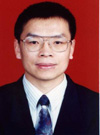doi:10.3850/978-981-08-6218-3_key-4
Some Recent Developments of Concrete Filled Steel Tubular (CFST) Structures in China
 |
Professor Lin-Hai Han Department of Civil Engineering Tsinghua University Beijing, P. R. China. lhhan@tsinghua.edu.cn |
Biography
Lin Hai is a Professor of Structural Engineering and Director of Institute of Disaster Prevention and Mitigation Engineering, at Tsinghua University.
He has published 4 books, more than 100 journal papers (including more than 70 refereed international journal papers) and 50 refereed international conference papers.
Lin Hai has received several excellence awards in China because of his contributions to the research and application of steel-concrete composite construction. He is one of the outstanding young researchers awarded by the Natural Science Foundation of China (NSFC).
Lin Hai holds roles on the editorial boards for the Journal of Constructional Steel Research (Elsevier), Steel and Composite Structures (Techno-Press), Journal of Structural Fire Engineering (Multi-Science Publishing) and the International Journal of Steel Structures (Korean Society of Steel Construction (KSSC)), and four national journals in civil engineering in China.
Abstract
This paper briefly introduces the design codes on concrete filled steel tubular (CFST) structures in China. Some of the recent research work on CFST structures is summarized, the topics covered include: 1) CFST members subjected to monotonic loading; 2) CFST members subjected to cyclic loading; 3) Fire resistance and residual strength for CFST columns after exposure to fire; 4) Effects of long-term load and pre-stress in steel tubes on the CFST columns; 5) Self-consolidating concrete (SCC) filled steel tubular (SCCFST) columns; and 6) Connections between the CFST columns and beams. Finally, some typical practical projects utilizing CFSTs in China are introduced.


